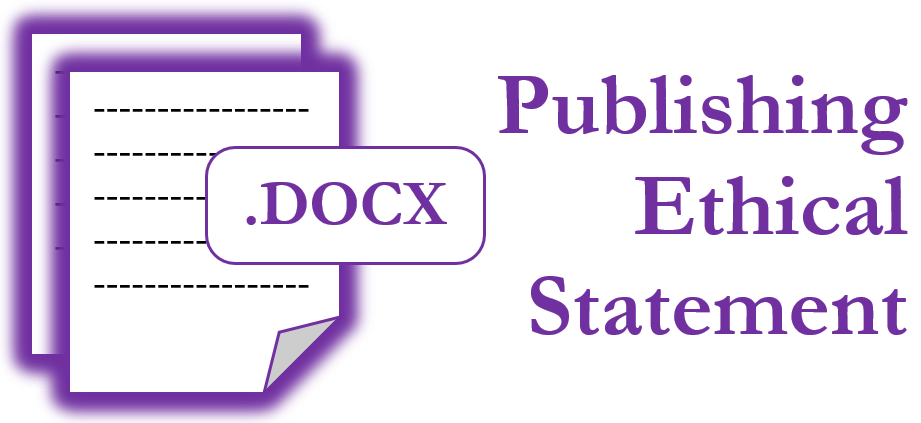Crafting the divine: How metaphors shape religious language
DOI:
https://doi.org/10.31763/jorel.v2i1.11Keywords:
Religious Language, Belief, Metaphoricism, radical viewAbstract
This research investigates the various purposes of metaphors in religious discourse. We will investigate the extent to which we can understand metaphorical language as irreducible. First, we will assert that metaphors convey more than just propositional contents. Their goals also frame their imagistic perspective that cannot be limited to a literal paraphrase. Moreover, in situations where plain language fails, they employ metaphors to bridge expression gaps. A detailed metaphorical concept will clarify the function of catachresis. With those metaphors, we can communicate things that we cannot conceptually isolate from a given utterance. Thus, with such analogies, we can transcend the boundaries of our conceptual repertory, which is absolutely essential for religious language. Finally, the results of the previous discussions about how metaphors can't be changed will be looked at in light of the radical view that all statements about God are inherently and irreducibly metaphorical if they are taken seriously.
Downloads
References
Allott, N., & Textor, M. (2022). Literal and metaphorical meaning: In search of a lost distinction. Inquiry: An Interdisciplinary Journal of Philosophy. https://doi.org/10.1080/0020174X.2022.2128867
Alston, W. (1989). Divine nature and human language. Ithaca, NY: Cornell University Press.
Alston, W. P. (2005). Religious language. In W. Wainwright (Ed.), The oxford handbook of philosophy of religion (pp. 220–244). Oxford: Oxford University Press. https://doi.org/10.1093/0195138090.003.0010
Bach, K. (2001). You don’t say? Synthese, 128(1/2), 15–44. https://doi.org/10.1023/A:1010353722852
Bezuidenhout, A. (2002). Truth-conditional pragmatics. Philosophical Perspectives, 16, 105–134. https://doi.org/10.1111/1468-0068.36.s16.5
Black, M. (1955). Metaphor. Proceedings of the Aristotelian Society, 55(1): 273–294. https://doi.org/10.1093/aristotelian/55.1.273
Boyd, R. (1993). Metaphor and theory change: What is ‘metaphor’ a metaphor for? In Metaphor and thought (pp. 481–532). Cambridge University Press. https://doi.org/10.1017/CBO9781139173865.023
Braithwaite, R. B. (1955). An empiricist view of the nature of religious belief. Cambridge: Cambridge University Press.
Burge, T. (1977). Belief de re. The Journal of Philosophy, 74(6), 338–362. https://doi.org/10.2307/2025871
Camp, E. (2006). Metaphor and that certain ‘Je Ne Sais Quoi’. Philosophical Studies, 129(1), 1–25. https://doi.org/10.1007/s11098-005-3019-5
Carston, R. (2010). XIII-metaphor: Ad hoc concepts, literal meaning and mental images. Proceedings of the Aristotelian Society (Hardback), 110: 295–321. https://doi.org/10.1111/j.1467-9264.2010.00288.x
Cavell, S. (1969). Aesthetic problems of modern philosophy. In Must we mean what we say? A book of essays (pp. 73–96). New York: Charles Scribner’s Sons.
Cohen, T. (1990). Figurative Incompetence. Raritan, 10(2), 33–40.
Eshlemen, A. S. (2005). Can an atheist believe in God? Religious Studies, 41(2), 183–199. https://doi.org/10.1017/S0034412505007602
Howard-Snyder, D. (2017). Panmetaphoricism. Religious Studies, 53(1), 25–49. https://doi.org/10.1017/S0034412515000487
Huxley, J. (1927). Religion without revelation. London: E. Benn.
Jüngel, E. (1974). Metaphorische Wahrheit. Erwägungen zur theologischen Relevanz der Metapher als Beitrag zur Hermeneutik einer narrativen Theologie. Evangelische Theologie, 34(Supplement), 71–122. https://doi.org/10.14315/evth-1974-sh05
Kaplan, D. (1989). Demonstratives. In J. Almog, J. Perry, & H. Wettstein (Eds.), Themes from Kaplan (pp. 481–563). Oxford: Oxford University Press.
Kaufman, G. D. (1972). God the Problem. Cambridge, MA: Harvard University Press.
Kaufman, G. D. (2007). Mystery, god and constructivism. In A. Moore, & M. Scott (Eds.), Realism and religion (pp. 11–30). London: Routledge.
Kenny, A. (2004). The unknown God. Agnostic essays. London/New York: Continuum. Kripke, S. (1972). Naming and necessity. Malden: Blackwell.
Lepore, E., and Matthew Stone (2010). Against metaphorical meaning. Topoi, 29(2), 165–180. https://doi.org/10.1007/s11245-009-9076-1
McFague, S. (1982). Metaphorical theology. Models of god in religious language. Philadelphia: Fortress Press. Moran, R. (1989). Seeing and believing: Metaphor, Image, and Force. Critical Inquiry, 16, 87–112. https://doi.org/10.1093/acprof:oso/9780190633776.003.0002
Nogales, P. D. (1999). Metaphorically speaking. Stanford: CSLI Publications. https://doi.org/10.1515/jlse.2002.009
Pannenberg, W. (2011). Grundfragen Systematischer Theologie. Gesammelte Aufsätze (2 vol.). Göttin- gen: Vandenhoeck & Ruprecht.
Perry, J. (2012). Reference and reflexivity (2nd ed.). Stanford: CSLI Press.
Recanati, F. (2004). Literal meaning. Cambridge: Cambridge University Press. https://doi.org/10.1017/CBO9780511615382
Reimer, M. (2001). Davidson on metaphor. Midwest Studies in Philosophy, 25(1), 142–155. https://doi.org/10.1111/1475-4975.00043
Rorty, R. (1987). Unfamiliar noises I: Hesse and davidson on metaphor. Proceedings of the Aristotelian Society, 61, 273–294. https://doi.org/10.1093/aristotelian/55.1.273
Searle, J. R. (1969). Speech acts. An essay in the philosophy of language Cambridge: Cambridge University Press. Soskice, J. M. (1985). Metaphor and religious language. Oxford: Clarendon Press.
Sperber, D., & Wilson, D. (1995). Relevance. Communication & Cognition (2nd ed.). Oxford: Blackwell. Sperber, D., & Wilson, D. (2008). A deflationary account of metaphors. In Gibbs, R. Jr. (Ed.), The cam- bridge handbook of metaphorand thought (pp. 84–105). Cambridge: Cambridge University Press. https://doi.org/10.1017/CBO9781139028370.007
Stanley, J. (2000). Context and logical form. Linguistics and Philosophy, 23(4), 391–434. https://doi.org/10.1023/A:1005599312747
Stern, J. (2000). Metaphor in context. Cambridge, MA: The MIT Press. https://doi.org/10.7551/mitpress/4568.001.0001
Stern, J. (2008). The Life and death of a metaphor, or the metaphysics of metaphor. Baltic International Yearbook of Cognition, Logic and Communication, 3(1): 1–43. https://doi.org/10.4148/biyclc.v3i0.16. Swinburne, R. (2016). The coherence of Theism. Oxford: Oxford University Press. https://doi.org/10.1093/acprof:oso/9780198779698.001.0001
Tirrell, L. (1989). Extending: The structure of metaphor. Noûs, 23(1), 17–34. https://doi.org/10.2307/2215827
Travis, C. (1985). On what is strictly speaking true. Canadian Journal of Philosophy, 15(2), 187–229. https://doi.org/10.1080/00455091.1985.10716416
Tur, A.P.A. & Sabrina, A. (2024). Identifying Javanese cultural norms and addressing politeness maxims in mitigating verbal sexual violence. EduLite: Journal of English Education, Literature, and Culture, 9(1), 82-96. http://dx.doi.org/10.30659/e.9.1.82-96/
Tur, A.P.A. (2019). Patterns of linguistics features in private chats of social media account leading someone to be a victim of a cybercrime. Leksika: (Jurnal Bahasa, Sastra, dan Pengajarannya), 13(1), 29-38. https://doi.org/10.30595/lks.v13i1.3858
Tur, A.P.A. (2021). Iconic English business name as a branding tool in the rural areas of Yogyakarta special region. LITERA, 18(1), 136-149. https://doi.org/10.21831/ltr.v18i1.20736
Tur, A.P.A. (2022). Trend of having more name parts in homogeneous community. BAHASTRA, 42(1), 17-25. https://doi.org/10.26555/bs.v42i1.66
Tur, A.P.A., Daulay, R., & Farida, H. (2024). Shifting echoes: Re-evaluating three generations perspectives on nicknames toward bullying. Humaniora, 15(2), 141-147. https://doi.org/10.21512/humaniora.v15i2.12261
Tur, A.P.A., Munandar, A., & Winarti, D. (2023). Petangan Jawa: Installing traditional values in names. NOTION: Journal of Linguistics, Literature, and Culture, 5(1), 58-68. https://doi.org/10.12928/notion.v5i1.6891
White, R. (1996). The structure of Metaphor: The Way the Language of Metaphor Works. Oxford/Cam- bridge, MA: Blackwell.
Wittgenstein, L. (1984). Philosophische Untersuchungen. Frankfurt am Main: Suhrkamp. Woudenberg, R. (1998). Panmetaphoricism examined. Philosophy & Rhetorik, 31(4), 231–247.
Downloads
Published
Issue
Section
License
Copyright (c) 2025 Jacob Floyd Hasselbaink

This work is licensed under a Creative Commons Attribution-NonCommercial-ShareAlike 4.0 International License.




